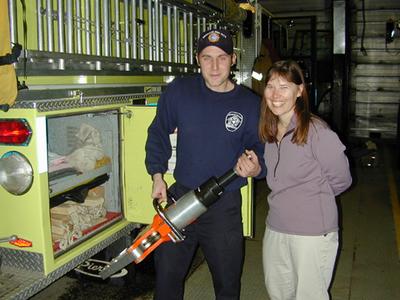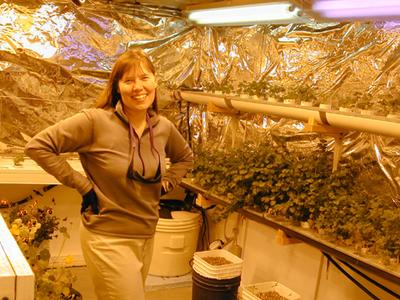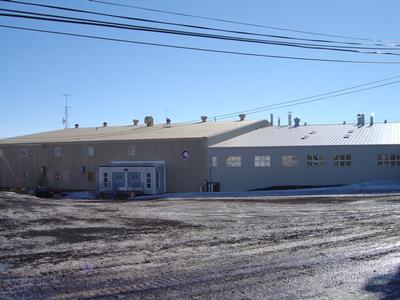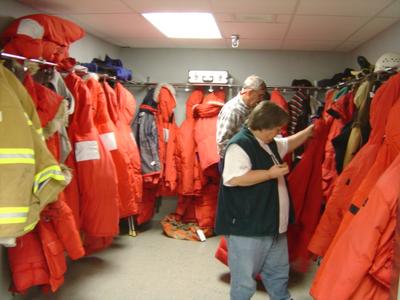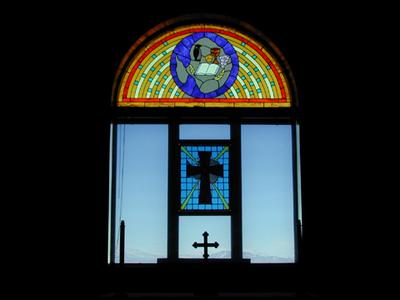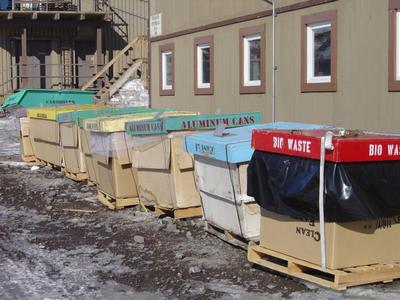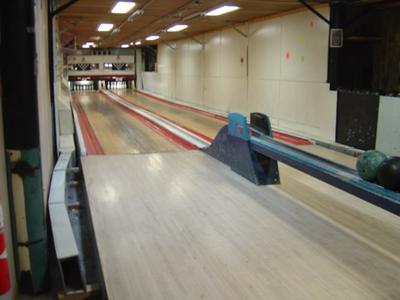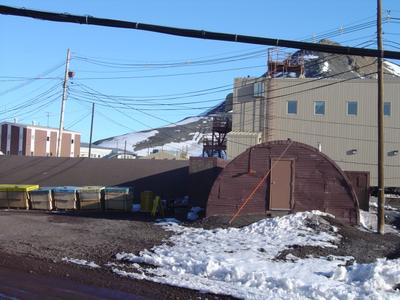
|
18 December, 2003McMurdo Station As my departure from the ice quickly approaches I thought it would be appropriate to share a little more about McMurdo Station, the place that I've called home for the past five weeks. McMurdo Station covers nearly 4 square kilometers and is the largest of the three permanent US bases. It was named for nearby McMurdo Sound, which was named by James Clark Ross in 1841 in honor of Archibald McMurdo, his lieutenant on the Terror. About 250 flights from Christchurch land here each year bringing the scientists, support staff, and cargo needed to keep this place running. During the summer (September through February) the base is home to up to 1200 people. During the winter this number drops down to 200. While McMurdo's dusty roads, over-sized vehicles, and scattered buildings gives one the impression of an industrial mining town; the social atmosphere, housing arrangements, and nightly activities are similar to that of a college campus. Like a mini town, McMurdo has a fire station, post office, computer labs, barber ship, several bars/pubs, gymnasium, coffee house, hospital, general store, aerobics/work out room, green house, library, and a bowling alley. It even has ATM machines and a weekly newspaper, The Antarctic Sun, is also published during the summer season. Other buildings include dormitories, machine shops, Crary lab, Mac Ops (responsible for all radio communication), Helo ops, field safety training, water treatment center, cargo, waste management, and the BFC (field equipment). More than 100 buildings make up the station and it is easy to get a little lost until you get your bearings. The recreation department posts nightly events such as tango lessons, spelling bees, movie nights, or musical performances in one of the local pubs. Special annual events like Icestock (a comedy rock fest held each January), 5-7k runs, chili cook offs, and Halloween parties are also part of the McMurdo tradition. While one might think of these events silly, they are an important part of keeping a positive moral in an extreme environment where one has little privacy. The weekly science lectures, which first began during the days of Scott, are also a part of the McMurdo culture. Each Sunday night hundreds of people pile in to the galley to hear an hour presentation put on by one of the researchers. An additional lecture occurs each Wednesday night at Crary. The lectures are an opportunity for the research to network and allow the other staff to better understand the science in which they are here to support. While scientists come in and out of town in various waves, the support staff usually sign 6, 8, or 12-month contracts. Raytheon currently has the contract with the US Antarctic Program (USAP) and employs the majority of the support staff. Some of these jobs include: electricians, janitors, shuttle drivers, engineers, heath care professional, carpenters, mechanics, IT support, journalists, lab technicians, and food service. Helicopter pilots are contracted about by an outside organization. Jobs in the Antarctic are extremely competitive and many people take a cut in pay to work on the ice or choose to work in fields in which they are overqualified. Housing is allocated through a points system, which takes into consideration the position, and previous experience on the ice. This will determine the number of roommates and whether or not your bathroom is located down the hall or is one shared with another set of suite mates. The dormitory into which I was placed had me sharing a room with three others and the bathroom was located down the hall. An unusual place naturally draws interesting people, and getting to know the people who work here is part of the McMurdo experience. Everyone has a fascinating story as to how they got here and what they do with their time when they leave. Most enjoy their "seasonal labor" lifestyle. After spending 6-8 months during the Antarctic summer, many spend the rest of the year traveling the world or return to similar seasonal work in their hometown. Not surprisingly, there are a large percentage of townies that call Alaska their home. The sense of adventure, the freedom to travel, and the ability to save a lot of money (as everything is paid for) is very enticing, and a large percentage of employees return to the ice year after year. Typical McMurdo introductions always end up in discussing the number of seasons one has spent on the ice. As I interacted with various scientists, galley workers, electricians, pilots, and mechanics, I couldn't help but think that my life must have seemed quite boring in comparison. Free from the pressures of the outside world, life at McMurdo is also like living in an imaginary bubble. How many places does one get to live where there are no bills to pay, traffic to fight, and free food (prepared by someone else) twenty four hours a day? With only two radio stations, a few TV channels (which either run movies, NPR, or scrolling announcements) one can become very cut off from the outside world. Since being here I haven't missed TVs, ringing phones, traffic, or driving. No one is bombarding me with the number of days that I have left to shop for the holidays or telling me what I need to buy. Perhaps escaping to this world that is only based partly in reality is another factor in drawing people back to the ice.
Contact the TEA in the field at . If you cannot connect through your browser, copy the TEA's e-mail address in the "To:" line of your favorite e-mail package. |







